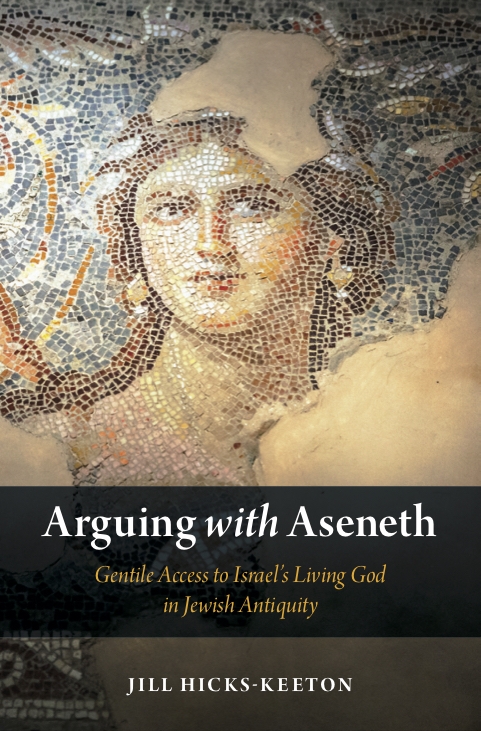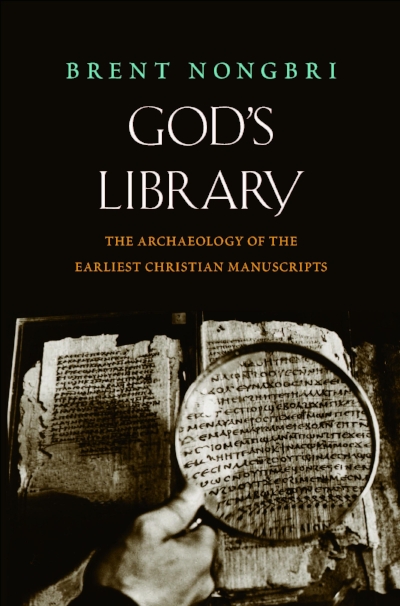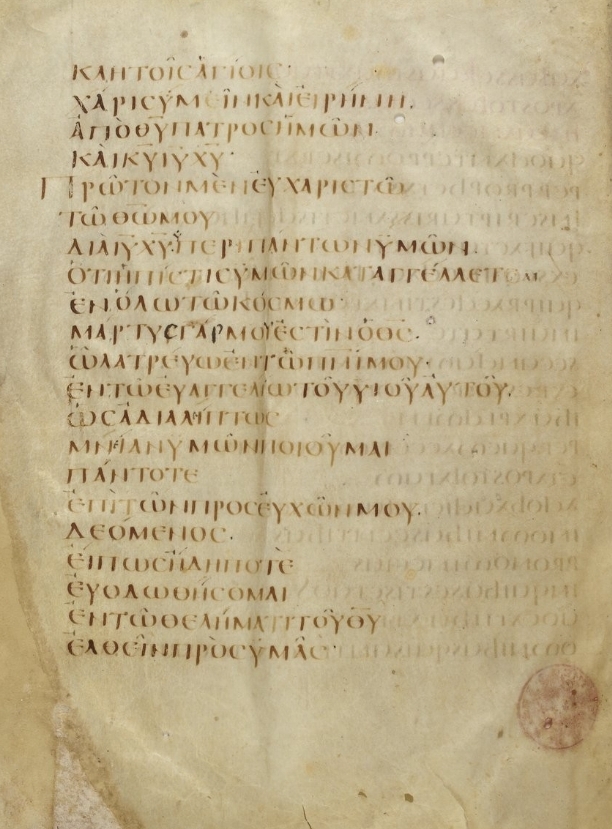By shifting away from the relationship between resurrection and embodiment, I read “behind” or at least “around” the flashpoints surrounding the nature of the resurrected body.
Read MoreDuke/UNC CLAS Symposium Report | De Malo: Evil and Theodicy in Late Antiquity
This year’s conference took up discourse about evil in late antiquity as a test case. Might the ever-pressing issue of theodicy provide a topic on which authors of various late ancient pieties could both demonstrate their commonalities and distinguish their competing claims?
Read MoreDissertation Spotlight | Sarah Emanuel, "Roasting Rome"
As the title of this project suggests, Revelation “roasts” Rome—both humorously and via imagined incendiary flame (see Rev. 17:16; 18:8)—to the extent of creating a new world order in which the implied Jewish Other reigns supreme over and against the Roman imperial order.
Read MoreCovenant without Circumcision? What to Do with a Woman
The character of Aseneth becomes transformed from material mother of the sons of Joseph to mythic mother-figure for the tribes of Israel and penitent nations who join in worshiping Israel’s God.She has become, in this ancient tale, a productive site of intervention in Israel’s story—a matriarch who matters in the history of and for the future of God’s covenanted community.
Read More“Not Veiled in Silence”: The Challenge of Writing about Early Christian Women
How did women of various regions, backgrounds, situations, and temperaments assume authority, exercise power, and shape both their legacy and the legacy of Christianity?
Read MoreA Wandering Jew: Some Reflections
Erich Gruen with a retrospective of his work: “If a consistent thread runs through my studies of Jewish history in the context of classical antiquity, it can be found in resistance to the common portrayal of Jews as victims.”
Read MoreA Manuscript of Exodus Wandering in the Wilderness
Ancient manuscripts are more than just carriers of texts. They are archaeological artifacts and deserve to be studied as such.
Read MoreCharting the Course: Using Maps for Pedagogical Progress
Borders change, today and throughout history. Incorporating maps into the classroom encourages the students to view this for themselves and to begin to understand the myriad of ways that politics shapes geographical borders.
Read MoreDissertation Spotlight | Scribal Habits in Selected New Testament Manuscripts, Including those with Surviving Exemplars
At the core of the dissertation, three chapters analyze the scribal habits of the copyists of various manuscripts.
Read MorePerforming Apocalyptic Texts: Teaching the Eschatological Banquet from the Dead Sea Scrolls
The Wedding Banquet of Cupid and Psyche (1517) by Raphael. Villa Farnesina, Rome
The Wedding Banquet of Cupid and Psyche (1517) by Raphael. Villa Farnesina, Rome
“Performing the banquet shifted their analysis from the realm of the academic into the realm of something that is socially functional, assisting with student thinking about the ancient texts as representative of real people and their actions and beliefs.”
Read MoreHarnessing Creativity in a Biblical Studies Classroom
If Esther had a Pinterest, what would she post on it? If Ruth had a Spotify playlist, what songs would she include? What if Susannah joined the #metoo movement?
Read MoreDissertation Spotlight | The Apophthegmata Patrum and the Greek Philosophical Tradition
Instead of only studying one particular practice, I have taken the monastic path of life as a whole, as proposed by the Apophthegmata Patrum, from conversion to advanced practice, and analyzed it light of the philosophical schools.
Read MoreLamenting a Broken World: Student Learning Through Creative Writing
In this creative assignment, students were empowered to engage with the biblical text in new ways: they understood some of the ways that biblical texts can relate to the modern world and vice versa, they used their own creative voices, and they reflected critically on why we must develop awareness of moments of pain and trauma in the world around us.
Read MoreOn Taxonomy and Classification: A Response
Throughout Classifying Christians, I proposed that Christian polemical ethnographers were operating both like physicists and anthropologists. In getting closer to the heretics—whether through personal or textual experience—the heresiologists actually made the terms of Christian culture both more and less clear.
Read MoreOne, Two, Many: Thoughts following Classifying Christians
In offering this innovative way of thinking of early Christian heresiology, Classifying Christians gives us an incisive (and indeed, troubling) outlook on contemporary academic practices and disciplines.
Read MoreEarly Christian Theological Anthropology and the Work of Classification: A Response to Todd S. Berzon
Todd Berzon’s Classifying Christians: Ethnography, Heresiology, and the Limits of Knowledge in Late Antiquity is a great book—sophisticated in its approach, challenging in the intricacy of its arguments, creative in its interdisciplinarity, and surprising in the ways in which it takes a genre that is easy to dismiss as trite and clichéd—that is, heresiology—and offers us a new lens with which to view it.
Read MoreClassifying Christians : An AJR Forum
Taking the ethnographic disposition as a starting point allows us to see how heresiologists acted in line with many other ancient writers, beyond or before Christianity, who also meant to know the world around them.
Read MoreClassifying Christians : An AJR Forum
In 2017, the Religious Worlds of Late Antiquity SBL section organized a review panel to discuss Todd Berzon's Classifying Christians: Ethnography, Heresiology, and the Limits of Knowledge in Late Antiquity. During the month of July, AJR will feature the panelists' responses.
Read MoreMade Tyrants by the Victory of Others
It would not be a mischaracterisation or an exaggeration to say that the late Roman state was a polity defined by civil war. Roman leaders at this time approached their rule ever cognizant of the fact that sooner or later, one of their subordinates could don the purple robe, stand before a provincial army, and be proclaimed emperor.
Read MoreA History of Judaism: Martin Goodman at the Center for Jewish History
A History of Judaism, while marketed as a ‘popular book,’ needs also to be considered for its ‘innovative conservatism,’ that is, its between-the-lines critique of current academic tendencies, and its active decision to step back towards a historiographical approach to the study of religion that has mostly lost its holding among current scholars.
Read More









![Gherardo Starnina - Thebaid, ca. 1420, Tempera on wood (Wikimedia Commons) [Sometimes attributed to Fra Angelico]](https://images.squarespace-cdn.com/content/v1/5449167fe4b078c86b41f810/1534121418493-UZ3BXHO6ZL8M70BB8Q17/Angelico%2C_tebaide.jpg)
![Southwest Texas McAllen Border Fence, Rio Grande Valley [ Photographer: Donna Burton ]](https://images.squarespace-cdn.com/content/v1/5449167fe4b078c86b41f810/1533738883693-XLDP3WL924ZNTV91Z2EM/32860951106_bc66460846_z.jpg)






